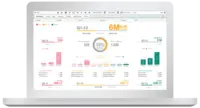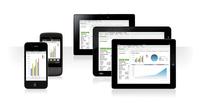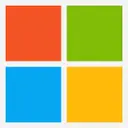Overview
What is QlikView?
QlikView® is Qlik®’s original BI offering designed primarily for shared business intelligence reports and data visualizations. It offers guided exploration and discovery, collaborative analytics for sharing insight, and agile development and deployment.
Awards
Products that are considered exceptional by their customers based on a variety of criteria win TrustRadius awards. Learn more about the types of TrustRadius awards to make the best purchase decision. More about TrustRadius Awards
Popular Features
- Customizable dashboards (62)8.585%
- Drill-down analysis (62)8.181%
- Report sharing and collaboration (59)8.181%
- Formatting capabilities (63)7.575%
Pricing
QlikView
Custom
Entry-level set up fee?
- Setup fee optional
Offerings
- Free Trial
- Free/Freemium Version
- Premium Consulting/Integration Services
Product Demos
QlikView Presentation HD
Qlikview Online Training - Qlikview Free Demo Video - Bigclasses
QlikView Tutorials for Beginners | QlikView Demo | Free Qlikview Training
QlikView for iPad
QlikView & Google Maps - Real Estate Demo
QlikView Export & Import Document Layout XML
Features
Product Details
- About
- Competitors
- Tech Details
- Downloadables
- FAQs
What is QlikView?
QlikView, Qlik’s classic analytics solution, aims to revolutionize how organizations use data, boasting an intuitive visual discovery that put business intelligence in the hands of more people than ever. Qlik Sense, the vendor's next-generation analytics platform, supports the full range of modern analytics use cases at enterprise scale by combining the Associative Engine with Cognitive Engine driving augmented intelligence, plus a scalable, governed cloud architecture.
As businesses modernize operational processes including BI, Qlik Sense is provided by the vendor as a way forward. Through the Qlik Analytics Modernization Program, QlikView users can adopt Qlik Sense at their own pace for a small uplift on their annual maintenance rate -- which Qlik states will expand the enterprise's analytic possibilities while reducing the total cost of ownership for BI.
QlikView Features
BI Platform Features
- Supported: Administration via Windows App
- Supported: Administration via MacOS App
- Supported: Administration via Web Interface
- Supported: Live Connection to External Data
- Supported: Snapshot of External Data
- Supported: In-memory data model
- Supported: OLAP (Pre-processed cube representation)
- Supported: ROLAP (SQL-layer querying)
- Supported: Multi-Data Source Reporting (Blending)
- Supported: Data warehouse / dictionary layer
- Supported: ETL Capability
- Supported: ETL Scheduler
Supported Data Sources Features
- Supported: MS Excel Workbooks
- Supported: Text Files (CSV, etc)
- Supported: Oracle
- Supported: MS SQL Server
- Supported: IBM DB2
- Supported: Postgres
- Supported: MySQL
- Supported: ODBC
- Supported: Cloudera Hadoop
- Supported: Hortonworks Hadoop
- Supported: EMC Greenplum
- Supported: IBM Netezza
- Supported: HP Vertica
- Supported: ParAccel
- Supported: SAP Hana
- Supported: Teradata
- Supported: Sage 500
- Supported: Salesforce
- Supported: SAP
- Supported: Google Analytics
BI Standard Reporting Features
- Supported: Pixel Perfect reports
- Supported: Customizable dashboards
- Supported: Report Formatting Templates
Ad-hoc Reporting Features
- Supported: Drill-down analysis
- Supported: Formatting capabilities
- Supported: Integration with R or other statistical packages
- Supported: Report sharing and collaboration
Report Output and Scheduling Features
- Supported: Publish to Web
- Supported: Publish to PDF
- Supported: Output Raw Supporting Data
- Supported: Report Versioning
- Supported: Report Delivery Scheduling
Data Discovery and Visualization Features
- Supported: Pre-built visualization formats (heatmaps, scatter plots etc.)
- Supported: Location Analytics / Geographic Visualization
- Supported: Support for Machine Learning models
- Supported: Pattern Recognition and Data Mining
- Supported: Integration with R or other statistical packages
Access Control and Security Features
- Supported: Multi-User Support (named login)
- Supported: Role-Based Security Model
- Supported: Multiple Access Permission Levels (Create, Read, Delete)
- Supported: Report-Level Access Control
- Supported: Table-Level Access Control (BI-layer)
- Supported: Field-Level Access Control (BI-layer)
Mobile Capabilities Features
- Supported: Responsive Design for Web Access
- Supported: Mobile Application
- Supported: Dashboard / Report / Visualization Interactivity on Mobile
QlikView Screenshots
QlikView Videos
QlikView Competitors
QlikView Technical Details
| Deployment Types | On-premise, Software as a Service (SaaS), Cloud, or Web-Based |
|---|---|
| Operating Systems | Windows, Linux, Mac |
| Mobile Application | Apple iOS, Android, Windows Phone, Blackberry, Mobile Web |
| Supported Countries | Americas, EMEA, APAC |









